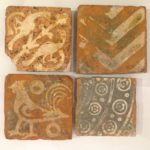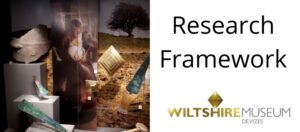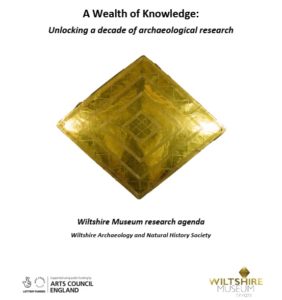Wiltshire Museum Research Framework
Introduction
In November 2019, the Wiltshire Museum was awarded £47,000 by Arts Council England Designation Development Fund, to review the research undertaken on our nationally important archaeology collections. From 2010- 2020, more than 200 postgraduate students undertaking archaeological research visited the Museum to access the collections, but only a small fraction of their work had been fed back into our collections database and gallery displays.
One of the main aims of the project was to identify the results of all this research and then update museum records, to improve our collections management systems. Going forward, as a legacy of the project, new processes have been put in place that will require greater detail from researchers concerning their results, and also ensure that this information is regularly imported into our collections management system, MODES. By reviewing the research that has been undertaken over the past decade, it has also been possible for the Museum to identify the under-researched areas of the collections, to promote them as possible areas of future enquiry to post-graduate students looking for projects. This is a new and dynamic way forward for museums, who are usually approached with requests to view material, rather than considering what they might want to find out about their own collections and then actively pursuing academic partners with whom they can work collaboratively.
Not unsurprisingly, a majority of the 200 post-graduates who have visited the Museum over the past decade, have come to research our Early Bronze Age collections from the Stonehenge and Avebury World Heritage Site. However, this Research Agenda clearly identifies the potential to do much more, with opportunities to reassess our Palaeolithic, Mesolithic, later Bronze Age, Iron Age, Roman, and Medieval collections.
In addition to this document and processes, another key legacy of the project has been the creation of c. 1,600 ‘enhanced’ MODES records, which document the findings of researcher in detail. From 2023, these records will be shared online, as part of the Wessex Museums Virtual Collections database, making the information accessible in the widest possible terms.
Research Frameworks Network
The Wiltshire Museum Research Agenda is the first Museum contribution to the Research Frameworks Network, alongside Research Frameworks across the UK. It sits alongside Research Frameworks for the Stonehenge and Avebury World Heritage Site, as well as the South West England Archaeological Research Framework. These Research Frameworks are hosted on a WordPress-powered website, developed to encourage linking between the agendas, enabling researchers to cross search across the frameworks for research questions and strategies associated with different places, periods and themes. The website also promotes discussion and debate by encouraging researchers to comment and contribute to updating Frameworks.
Download the full Introduction, including methodology and key points
Hear more about the Wealth of Knowledge Project and the Research Agenda from Wil Partridge in this online talk.
Palaeolithic and Mesolithic
The Palaeolithic and Mesolithic periods cover an extraordinary period of time, from the first occupation of Britain by groups of archaic humans through to the advent of farming at the beginning of the Neolithic. This time period would have seen ice sheets advance and retreat multiple times, followed by the development of lush woodland. The museum’s collections from these earliest time periods are relatively limited, but includes the largest individual collection of Palaeolithic hand axes from the Knowle Farm Gravel Pits, Little Bedwyn, as well as an important Late Mesolithic site associated with a tufa spring from Oliver’s Hill Field, Cherhill.
Download the Palaeolithic and Mesolithic Research Agenda
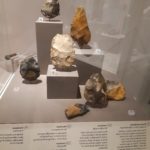
Neolithic (4,000-2,400 BC)
The Neolithic monuments of Wiltshire are among the most famous archaeological sites of Southern Britain. The Museum collections dating to this period are perhaps surprisingly small, yet are extremely significant, with assemblages relating to a number of key sites throughout the county, including West Kennet long barrow, Avebury, The Sanctuary, Marden Henge and Woodhenge.

Early Bronze Age (2,400-1,600 BC)
The Early Bronze Age was a period of considerable change in central-southern Britain, and many of the barrows which pepper the Wiltshire landscape today were constructed at this time. In the beginning, probably associated with an influx of people from the near continent, we see the adoption of distinctive burial customs, pottery, and the first copper (and then bronze) objects. As the period went on, the exceptional and well connected ‘Wessex’ series of burials would develop, associated with elaborate and exotic grave goods. The Museum holds a large and internationally important collection of Early Bronze Age grave goods from across Wiltshire and the Stonehenge landscape, as well as a smaller collection of domestic assemblages dating to this period.
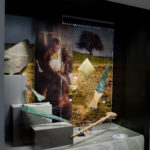
Middle Bronze Age to Middle Iron Age (1,600-100 BC)
Although there are some settlements known on the Marlborough Downs, there is a conspicuous absence of evidence for settlement in the period 1,600-1,000 BC for much of northern Wiltshire, especially in the Vale of Pewsey. This all changes at the start of the turn of the first millenium BC, when a number of monumental middens, huge piles of domestic waste, were constructed all along the Vale. These middens are known at Potterne, East Chisenbury, and All Cannings, and a further is suspected in Bishops Cannings. Associated with huge quantities of pottery, animal bone, and other material culture, these middens span the Bronze Age/Iron Age transition, and the museum holds significant quantities of material from all of these sites and others in the period.
Download the Middle Bronze Age to Middle Iron Age Research Agenda
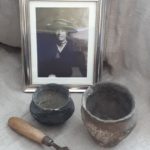
Later Iron Age and Roman (100 BC - AD 450)
A substantial portion of the Collections are made up of objects relating to the Later Iron Age and Romano-British periods; records attributed to these periods make up around a quarter of all archaeological records on the collections management database. Arguably, this is the most disparate group of material in the collections. Important sites include Nettleton Scrubb Temple, Roman villas at Littlecote, Castle Copse, Atworth and Box as well as the towns of Verlucio and Cunetio. Of national importance is the Marlborough Bucket.
Download the Late Iron Age and Roman Research Agenda
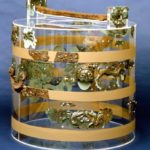
Early Medieval (AD 450-1100)
The Museum’s Early Medieval collections are relatively small, but have the benefit of being dominated by a group of recently excavated, and well-published, sites. The evidence if firmly focused on the Early and Middle Saxon periods (c. 410-900), with much less in the way of material attributable to the Late Saxon period. he main strength of the Museum’s Early Medieval Collections are the Early Saxon cemeteries of Collingbourne Ducis, Blacknall Field, Pewsey and Grove Farm, Market Lavington.
Download the Early Medieval Research Agenda

Medieval and Post-Medieval (AD 1100-1750)
It is in the Medieval and Post-Medieval periods that modern Wiltshire as we know it really starts to take shape. Saxon burhs such as Cricklade developed into towns, the many small rural villages which dot the landscape took shape, and castles such as the royal hunting lodge at Ludgershall were first constructed. The Museum’s Medieval and Post-Medieval collections are dominated by the large archive recovered during the excavations of Ludgershall Castle, as well as assemblages from other sites, such as a contemporary assemblage from Huish Church and Post-Medieval material from New Park Road, Devizes.
